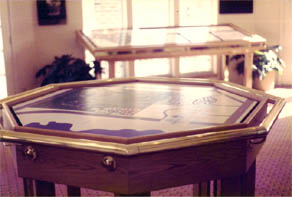
Exhibits, Incorporated
 |
Exhibits Inc. develops and produces displays for tract housing showrooms, conventions, restaurants, and many other venues. The company employs wood and metal workers, designers, artists, and silk-screen printers to make displays like the one at the left. The map of the development was screen printed on metal, so magnetic vinyl markers could be placed on the "sold" properties. |
| Enameled masonite panels were prepared by the wood shop crew. My job was first to take architectural drawings, camera ready paste-ups, floor plans, or logos, and make film positives with a large format camera and dark room. I then coated silk screens with a liquid photo emulsion that after dry, was put with the film positive into a vacuum table and exposed to a bright light for a specified time. The unexposed emulsion is washed away, and the result is a photo stencil, through which ink is forced with a squeegee. | 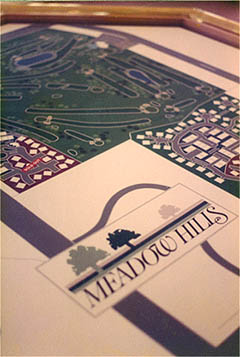 |
|
The black lines are always applied last, and are extremely critical. These final detail lines are from screens exposed with photo positives. The panel above was 40" high, and required 29 separate screens and applications of ink. This panel was one of five. |
Each new color in a particular project requires a different stencil, or color separation. The color separations for the panel to the left were made using "Rubylith." Rubylith is cheaper than darkroom film, and is cut with an exacto knife in normal light, so was practical. The screens were burned the same way with Rubylith instead of positives. Making sure everything lines up is called "registration," and this is more critical with every successive color application. A mistake means the board has to be wiped - with laquer thinner - back to the baked enamel, and started over.
|
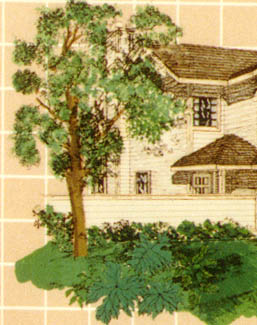 |
Today, this kind of project is done with a computer. The chemicals, solvents, expensive vacuum tables, darkrooms, and press on type have become things of the past, now used by artists and purists.
|
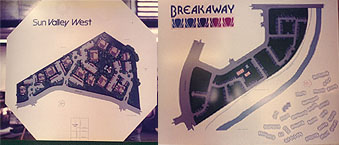
Details from others of the many panels I worked on.

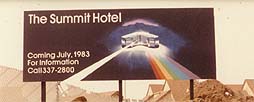 |
This billboard was done on four by five foot masonite panels, and was five panels wide.
|
|
Using masking tape and spraycans, the
A month later, the hotel was sold, and I made the billboard below to replace the prism. The lettering and clip art was brought to me from the typesetter, and I made patterns with an opaque projector and white butcher paper. The painted boards were covered with "frisket paper" (essentially masking tape that is three feet wide). The patterns were put into place, and then cut with an Exacto knife. The appropriate parts were peeled, and then painted with a roller and ordinary wall paint. The rest of the paper is peeled off, and the work is off to the installation crew.
|